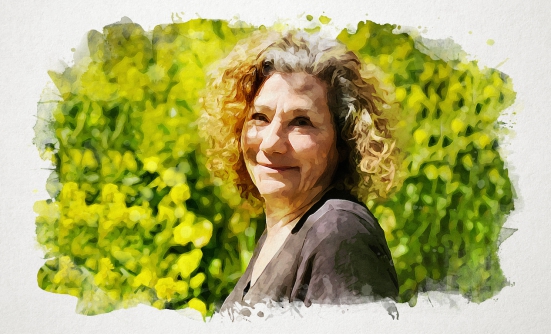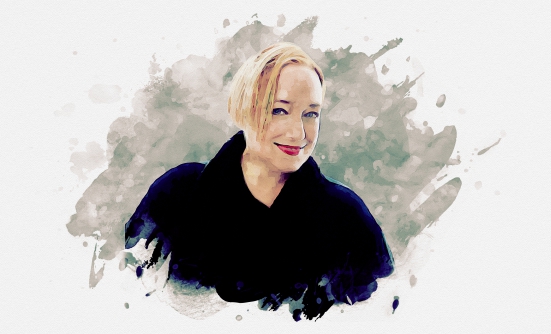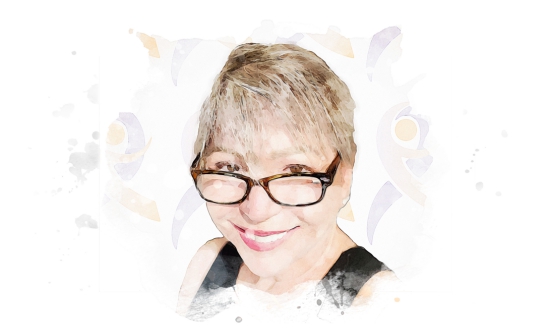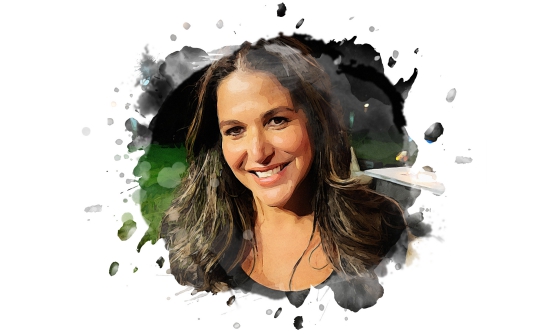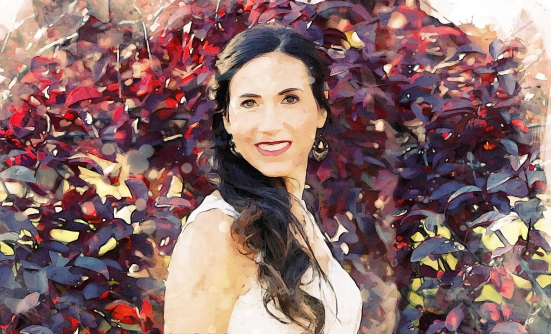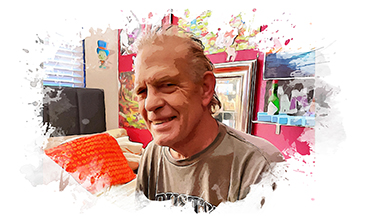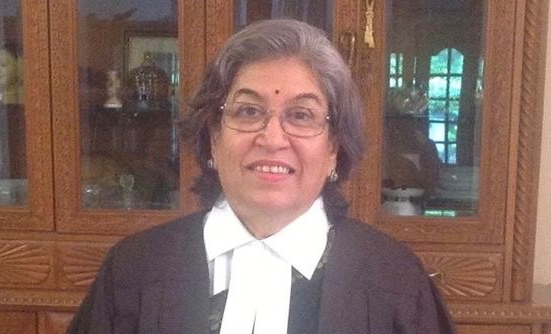
Daniel handed me a soft package before we were seated in the restaurant. I tore open the wrapping and found a hand-knit black wool cap with white and red trim. “F - - - CANCER” was embroidered across the front.
My first chemo treatment was scheduled for the next day.
I pulled the cap over my abundant, long, and shiny hair; soon I would be bald.
Daniel and I toasted each other with a glass of prosecco. I ordered Pacific salmon with asparagus and baby roasted potatoes followed by chocolate cake for dessert. This could be my last good meal for a while.
That night I wore my cap when I rushed out to buy a brainwashing tape called Preparing for Chemo. I listened, trying very hard to visualize chemo as “rays of healing golden light” that would eradicate the evil cancer cells.
The next morning, armed with my cap, the tape, and a book, I entered the chemo room for the first time. It looked like any hospital waiting room except all the chairs were Barcaloungers.
The nurse stuck a needle in the port that had been surgically implanted above my heart. It hurt, as it would continue to, every time.
“This is just saline to start,” she said.
Soon she added a bag of steroids that would help with side effects. Next was a bag of Adriamycin, a liquid that looked like cherry Jell-O before it set. Last was a bag of urine-colored fluid. Seeing the label “Cytoxan” made it difficult to continue listening to the brainwashing tape.
When I got home, I napped in my garden. Butterflies and hummingbirds lulled me to sleep. When I woke up, I felt unsteady. Imaginary voices whispered in my ear. “What did you say?” “Talk louder!” “Could you please repeat that?” I asked, but no one responded.
I tried to watch Sex in the City on TV but couldn’t follow the storyline, so I went to bed. The nurse had sent me home with sleeping pills.
The next morning, I was still dazed but wasn’t throwing up as I’d expected. I drank lots of water and faithfully took all the medicine as instructed. In 3 days, I was back in my spin class.
I didn’t have to think about chemo for another 3 weeks. Instead, I became obsessed with searching for the first signs of hair loss, which would happen in 18 to 22 days.
“Could I be the exception?” I asked the nurse.
“There are no exceptions. Not with these drugs,” she said.
I worked on the invitation and the guest list for my head-shaving party.
Chemo number 2 was less scary. The night before, I started wearing my cap, now over my bald head, and kept it in place until I felt normal enough to return to the gym.
Although I always had auditory hallucinations and felt like I had the flu, 3 days after chemo, I was mostly okay.
My cap made me feel less like a victim. I had to sit there and take it, but it didn’t have to take me.
My cavalier yet positive attitude was about to be challenged. A simple exchange with a medical technician brought me to my knees and forced me to deal with my new reality.
When I finished chemotherapy, my oncologist prescribed 30 radiation treatments—5 days a week for 6 weeks. My first appointment was for a procedure called “mapping and planning,” which marked the area about to be radiated with tiny blue tattoos.
After waiting 2 hours, the technician came to collect me. He asked me to undress from the waist up and positioned me on the table.
“Sorry I was so late but I had a terminal patient. You know how it is.”
No, I did not. I hated even hearing the word “terminal.”
“Do you mind if I eat my lunch? I’m starving.” I nodded in agreement, unable to form words. Soon the sweet smell of an overripe banana filled the room.
“Usually, I buy my dates dinner and treat them to a movie before I take their shirts off,” he said.
I hadn’t thought about dates or seduction recently. I was a 1-breasted, bald-headed woman with raw, red scars.
When you lie on your back with your hands pinned overhead, the tears you shed go directly into your ears, especially if you happen to be bald.
The technician tried to blot my tears with a Kleenex, but they kept coming. I felt a series of stings as 3 blue tattoos formed a triangle on my chest. They would brand me for life, warning future doctors not to radiate this part of my body again. Radiation is so powerful it can only be done 1 time, in 1 place.
It wasn’t until hours later when I sat down to dinner with my husband that I was able to talk. The technician had exposed me. I was no longer the model patient with cancer I had desperately pretended to be.
Up until that moment I had sailed through my treatment, worrying about how everyone I loved was dealing with my cancer. I hadn’t stopped to think about how my body had changed or what that meant. My life was simply about living or dying. Black or white.
Now the battle was different: it seemed I would survive. How was I going to move forward and deal with all the subtle gradations and choices?
Would I ever again feel like a woman who might be invited out on a date? Would someone flirt with me, a uni-boob?
Once I gave myself permission to cry, I couldn’t stop. I remembered that when my father died 10 years earlier, I had made a pact with myself. I could cry as much and as loud as I wanted, by myself, in the confines of my car. Once I got where I was going and parked, it was time to stop. I now reinstated this rule.
Crying alone in my car was a safe haven. I abandoned my role as the humorous patient wearing the F - - - CANCER hat who insisted all her visitors bring boob jokes to the hospital.
Even though the technician was certainly inappropriate, I’m grateful for our exchange.
It was time to grieve.
The ESSAY column in Conquer is devoted to lifting the voices of people touched by cancer.
Read more essays or submit yours.





